Reviews
Fred Zinnemann
USA, 1952
Credits
Review by Cullen Gallagher and Victoria Large
Posted on 04 February 2011
Source Republic Pictures DVD
Categories Blind Spots
Don’t shove me Harv. I’m tired of being shoved.
Introduction by Cullen Gallagher
If you don’t count City Slickers, High Noon was most likely the ninth Western movie I saw in my life. Dances With Wolves, Unforgiven, The Quick and the Dead, Tombstone, Posse, Young Guns 1 and 2, Shane. High Noon was next. I was 12. The thing is, I didn’t know that these were “Westerns” when I saw them. Most came from the New Releases section of Blockbuster. Unforgiven I saw on Pay-Per-View. Young Guns might have been on HBO. Shane came from the Classics section of Front Row Video, and High Noon came from the Classics section at the Public Library. I only began to venture to the “Classics” section of video stores because of that American Film Institute 100 Years 100 Movies poster I picked up when renting a video game (Yoshi’s Island for the Super Nintendo, if I remember correctly). At the time, I didn’t know anything about High Noon, who Gary Cooper or Grace Kelly were, but it was on the list, and it looked like a good movie. Not a good “Western,” but just a good movie. And it was—I loved it.
Thing is, I don’t remember when I started categorizing these movies as “different” in genre than other Drama, War, or Action movies. They don’t need to be. I didn’t know that a “Western” was a specific thing, a “niche” genre that appealed to only viewers interested in that “type” of thing. I was a kid, I liked exciting movies, and High Noon was exciting to me. The funny part of all of this is that, for whatever reason, I can remember every movie that would be called a “Western” that I saw up until that point. I couldn’t tell you the first Action movie I saw, first Sci-Fi, or any other genre. But Westerns, for some reason, stick out in my memory. And it wasn’t until the past year, when I began reading and watching a lot more “Westerns,” that I finally realized what I did as a young kid: “Westerns” don’t need quotes or capital letters to justify themselves. They’re damn good stories, and they make damn good movies.
Review by Victoria Large
As a cinephile, I’m not good at admitting my blind spots. I am, on occasion, abashed by my own geekiness when it comes to movies: my penchant for arcane trivia, my appreciation for director’s commentaries and heady academic criticism read just for fun. Yet that’s nothing compared to the embarrassment that I feel when, faced by a fellow film geek, I must cop to a gap in my own education. So I was intrigued but trepidatious when I was offered a chance to participate in this feature and write about a canonical film that I’d missed.
I looked at the National Film Registry, the American Film Institute’s “100 Years” lists, and the democratic, if dubious, Top 250 list on the Internet Movie Database. I zeroed in on High Noon, its title repeated on “best” lists across the board, and sheepishly reported back to my editor. I hadn’t seen it.
I don’t hate westerns, I really don’t, but I can’t claim to know the genre inside out either. I often prefer to take my westerns with an overt twist. I like Arthur Penn’s revisionist epic Little Big Man and Jim Jarmusch’s spellbinding, dirgelike Dead Man; I count Western-infused genre flicks like Kathryn Bigelow’s Near Dark and Joss Whedon’s Serenity among my favorites. Perhaps that’s been my way of sidestepping the obvious, that westerns, as a genre, come with considerable historical and political baggage, to the extent that the prospect of watching an unreconstructed western feels less like indulging in a bit of escapism than it does engaging in a serious academic exercise.
Of course I’ve watched a fair number of western classics - The Magnificent Seven, Shane - usually with my dad. (Is there a genre more suited than the western for watching with dad?) And I haven’t actively avoided High Noon. But I haven’t actively sought it out either.
Now that I’ve viewed and researched High Noon, my embarrassment at not having seen it previously has only increased. High Noon’s vaunted status may have obscured the fact, but this is a taut, low budget black and white thriller that bears little resemblance to the more conventional epics that it shares a shelf with at the video store. It’s a film so ambivalent about the trappings of its genre that John Wayne himself deemed it “un-American.” This is a rebel movie: perhaps it isn’t as obviously unusual as a Jim Jarmusch flick, but like its star Gary Cooper, much of High Noon’s power lies in its understatement.
The plot is simple: Cooper’s character Will Kane has just relinquished his position as town marshal in order to pursue a new life with his wife Amy, a beautiful young Quaker played by a then-unknown Grace Kelly. On the day he gives up his badge, word gets out that Frank Miller, a dangerous outlaw that Kane helped put away, will be returning on the noon train. Kane can’t bring himself to flee before noon, but he also struggles to find support from anyone in the town as the hour approaches—Amy is of course opposed to the impending violence, and Kane is unable to talk the crowds at the local saloon or the local church into joining his posse. On occasion, their reasons for avoiding the coming fray are good ones, and Amy’s brief speech about her aversion to violence resonates as much as any other in the film. Director Fred Zinnemann and screenwriter Carl Foreman give us a world where confusion and selfishness exist, where the right answer is hard to come by. Even the town preacher is hard-pressed to make a definitive statement about how Frank Miller should be handled, and points out the hypocrisy of those who profess to follow the commandment “Thou shalt not kill” while at the same time paying others - law enforcement officers, he means, and soldiers - to do it for them.
Zinnemann and Foreman saw High Noon as an allegory for the betrayals of Hollywood’s Red Scare in the 1950s, but like Invasion of the Body Snatchers, a Cold War classic of a few years later, High Noon is open to multiple readings. The film’s assertion that Miller was set free by the “politicians up north” when he ought to have received the death penalty invite more conservative readings, and Cooper’s lone hero is of the sort than any outnumbered person with a cause might identify with him. Nevertheless, High Noon’s elasticity of meaning is not a flaw, but rather one of the elements that makes the film compelling. (One suspects that this elasticity has also contributed to the film’s longevity.)
But I don’t wish to prattle on about context and politics at the expense of writing about how well the film works as a powerful bit of storytelling. When Kane quietly sits down to fill out his last will and testament a few minutes before noon, it’s casually heartbreaking. The suspense is terrific when the train whistle pierces the air like a death knell, and the train itself roars in, trailing with it a black smoke cloud. And when the story reaches its abrupt, tough-to-shake ending, you’ll need a moment to catch your breath.
I wonder now what took me so long to get around to High Noon, and I’m trying to conjure up other blind spots, in the hopes of realizing once again that I’ve been a fool. I wonder what else I’ve been missing.
More Blind Spots
-
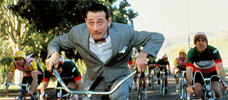
Pee-wee’s Big Adventure
1985 -
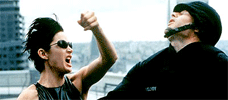
The Matrix
1999 -
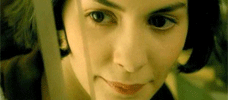
Amélie
2001 -
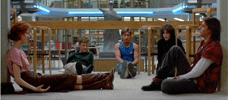
The Breakfast Club
1985 -
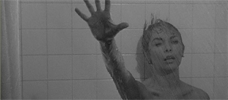
Psycho
1960 -
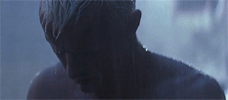
Blade Runner
1982 -
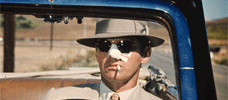
Chinatown
1974 -
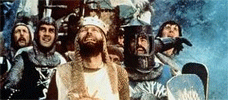
Monty Python and the Holy Grail
1975 -
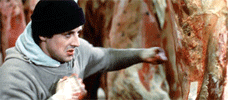
Rocky
1976 -
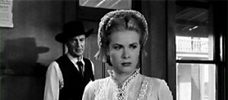
High Noon
1952 -
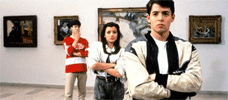
Ferris Bueller’s Day Off
1986 -
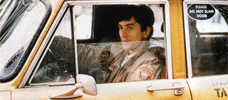
Taxi Driver
1976 -
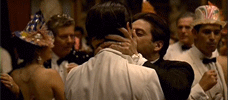
The Godfather
1972 -

E.T.
1982 -
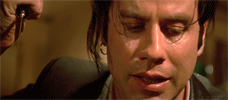
Pulp Fiction
1994
We don’t do comments anymore, but you may contact us here or find us on Twitter or Facebook.



